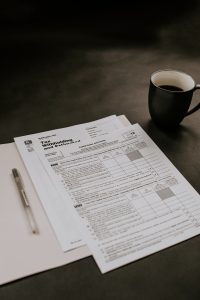Forex trading has been a popular investment avenue for years, and as technology advances, more and more traders turn to algorithmic trading to automate their trading strategies. This has led to the development of sophisticated software programs and tools, making it easier for traders to execute profitable trades. However, for these programs to work effectively, they require coding.
Coding plays an essential role in the forex trading process, as it enables traders to create algorithms that can execute complex trading strategies automatically. These algorithms, also known as trading robots or expert advisors, use pre-defined rules to analyze the market, identify trading opportunities, and execute trades accordingly.
In forex trading, coding is primarily done in programming languages such as MQL4, MQL5, and Python. These languages provide traders with the tools and features they need to create efficient trading robots that can handle large amounts of data and make informed decisions based on market conditions.
MQL4 and MQL5 are commonly used by traders who use the MetaTrader 4 and MetaTrader 5 trading platforms, respectively. These platforms are popular among traders due to their user-friendly interface and the ability to customize and automate trading strategies. MQL4 and MQL5 are similar languages, with MQL5 being an upgraded version of MQL4. Both languages use a syntax similar to C++, making it easier for traders with a programming background to code their own trading robots.
Python, on the other hand, is a general-purpose programming language that has gained popularity in recent years due to its simplicity, flexibility, and wide range of libraries and frameworks. Python is used in forex trading for tasks such as data analysis, machine learning, and backtesting trading strategies.
Coding in forex trading involves writing instructions that dictate how the trading robot should behave in different market conditions. This includes defining the entry and exit points, stop-loss and take-profit levels, risk management parameters, and other rules that determine how the robot should trade.
Traders can use different types of indicators and technical analysis tools to create their trading strategies. For instance, a trader may use moving averages, Bollinger bands, or Fibonacci retracements to identify potential trading opportunities. Once these indicators are defined, the trader can code the trading robot to analyze the market and execute trades based on the signals generated by these indicators.
Coding also plays a crucial role in backtesting trading strategies. Backtesting involves testing a trading strategy on historical data to determine its profitability and reliability. This is done by running the trading robot on historical market data and comparing its performance against the actual market conditions during that period. This helps traders to identify any weaknesses in their trading strategies and make necessary adjustments before deploying the robot in live trading.
In conclusion, coding is an essential component of forex trading, as it allows traders to automate their trading strategies and execute trades more efficiently. With the use of programming languages such as MQL4, MQL5, and Python, traders can create sophisticated trading robots that can analyze large amounts of data and make informed decisions based on market conditions. With the help of backtesting, traders can refine their trading strategies and improve their performance, ultimately leading to more profitable trades.





